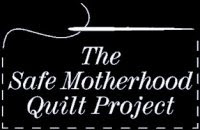Midwife to discuss maternal health
By Anna Scott
 Ina May Gaskin, left, shows Tamar Kalta, center, how to feel the position of Cayla Whitehead's baby during a class in midwifery at The Farm in Summertown, Tenn. Gaskin is a midwife who has helped to bring back home birth and lay midwifery.
Ina May Gaskin, left, shows Tamar Kalta, center, how to feel the position of Cayla Whitehead's baby during a class in midwifery at The Farm in Summertown, Tenn. Gaskin is a midwife who has helped to bring back home birth and lay midwifery.SARASOTA - Ina May Gaskin, who has been called the mother of modern midwifery, will be in Sarasota this weekend for a panel discussion of maternal health issues. On Sunday she will appear alongside Dr. Washington Hill, the head of obstetrics at Sarasota Memorial Hospital, and Head Start Director Jennifer Highland and State Rep. Keith Fitzgerald, D-Sarasota.
Gaskin grew up in Iowa and lives in rural Tennessee near the birthing center she founded more than 30 years ago. She has written several books on natural motherhood and is leading a movement for better tracking of causes of death in pregnant women. Gaskin is also the first midwife to have an obstetrical maneuver named after her: the “Gaskin Maneuver” dislodges an infant's shoulder during birth without using drugs or surgery.
Q:Your latest book is “Ina May's Guide to Breastfeeding.” What do you think about the recent flare-ups over women breastfeeding in public?
A:In this country too often people are rude to a mom who is giving her baby the best food and medicine she can. And these super bibs people buy to cover it up – who would like to eat with a blanket on their head? It's just bizarre. Babies like to look at their mothers when they're eating. Unless we're going to force women to stay in their homes for the duration of breast-feeding we should look at it as a pretty sight and be glad the baby's not crying.
Q:What is biggest challenge facing the midwifery movement today?
A:Cesarean sections and unnecessary inductions. I think there's a huge fear of malpractice lawsuits. You never hear of someone getting sued because they did an unnecessary cesarian, but there are quite a few lawsuits where they say, you didn't do a c-section fast enough. As for mothers, some of them don't even think a cesarian will hurt. This generation isn't cautious enough about surgery. We're getting too far away from the laws of nature. I grew up around farm people and they believed anything can be born naturally. The body is not a lemon.
Q:What do you plan to say in your lecture today to Sarasota Memorial hospital staff?
A:I think because we don't have a part enough in educating the doctors or their medical students, they don't understand what we do. They only tend to come in when we have a problem so it's easy for them to develop the idea that all the births we do are problems. Those situations are just part of the mix. We midwives know we need doctors. We would never say there should be no such thing as a doctor. In an ideal maternity care system you would also have midwives and we would be part of the backbone of the system.
Q:The Safe Motherhood Quilt Project is your latest project, a traveling quilt made up of individually designed squares, each one devoted to a woman in the U.S. who has died of pregnancy-related causes since 1982.
A:The lowest pregnancy death rate in the U.S. was in 1982 and we can't get it back going down. The CDC said we could be missing as many as two-thirds of the deaths because we don't track them closely enough. That's an intolerable situation. I can't think of any way to end that than to require that every single death be counted, that the CDC be given the power and funding to that, and state laws are amended to be in sync with each other.




















No comments:
Post a Comment